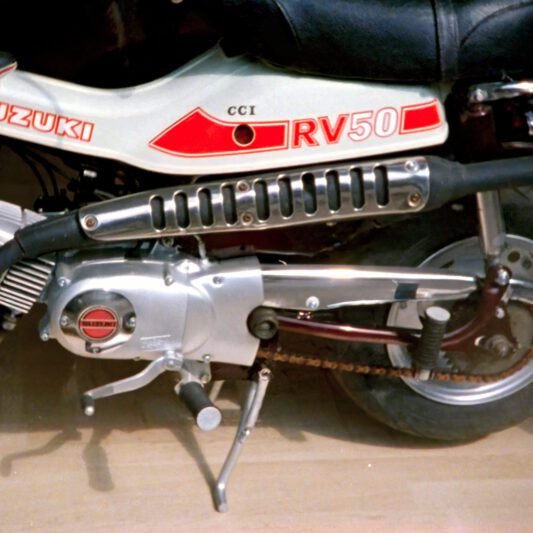The best things in life are analog!
Which photo camera is the best for capturing the moments of now? A smartphone of course! Or not? I always have it with me, it takes technically perfect photos easily and very quickly. The photo costs practically nothing and I can share it with others immediately. The smartphone or other digital cameras are perfect tools, but I am not a professional photographer who has to make a living from the photos. Yes, I use digital cameras too, but do they make me smile? No!
Less is more
I have found that the pictures that I took with the simplest technical means but with a lot of mental effort gave me the most satisfaction.
When it comes to camera technology, to me applies : less is more. In this context, little technology means that light falls briefly through a lens onto a film. That’s all you need to take wonderful photos. If you don’t believe that, look at the masterly photos from the years 1860 to 1910, e.g. Lartigue`s Cousin Bichonade in Flight (1905) and Drag-racing day at the Auteuil races (1911) or Stieglitz’ Winter Fifth Avenue (1892). Anne Brigman’s The Breeze (1910) is another example:
Or look at Wuhan East Lake of Martin Tai. This Minox photo is composed in such a minimalist way and at the same time tells many stories:

The challenge
On the other hand I find it fascinating to consciously go through the entire process.
From
– restoring and maintaining the camera
– selecting and preparing the film
– recognizing the right place and the right moment for the picture
– understanding what happens in the camera when the shutter is released
– developing the film up to
– digitizing and post-processing the negatives.
Minox
When cameras were still analog and exposed film, the legendary miniature cameras from Minox were among the smallest cameras in the world.
But they weren’t just small, they were of the highest, uncompromising quality. Despite their precision, they were extremely robust, reliable – and beautiful. They were also expensive.
The idea behind their design was that you could always have them with you and that they should be easy to use. And that they deliver the best possible image quality.
My Minox A is a purely mechanical camera that requires neither electricity nor a battery and is still doing its job even after 70 years.
The paradox
The Minox cameras at first glance you wouldn’t trust to deliver acceptable photos. But if you start taking photos with them intensively, you quickly realize that you can make extraordinary photo art with them. Paradox!
Now some will argue that you can’t take serious photos with such a camera for these reasons:
- The film format is too small. You cannot make enlargements larger than postcard size from negatives measuring 8 x 11 mm, they say. This is of course nonsense. Who decides at what size the film grain makes an otherwise excellent image unusable?
- The Minox only has a fixed normal lens, comparable to 50 mm lenses on 35 mm cameras. To take good photos, you also need a telephoto and wide-angle lens. Of course, that is not an argument either. If that were true, most of the world-famous Leica photos in the history of photography would be unusable, because they were also usually taken with a 50 mm lens.
The Minox may seem like a toy because of its size and jewel-like appearance, but in reality there is no reason why you can’t make excellent fine art photographs with it.

On the contrary, it is extremely suitable for rough everyday use. Like an oyster, its hard shell protects the delicate i.e. precisely manufactuerd interior.I can take it anywhere. A Minox doesn’t appear aggressive towards strangers when taking photos. I don’t even have any problems with it in extreme cold, where large cameras and especially battery-operated cameras tend to fail. When I take it out of my pocket in winter, it is warmed to 37° Celsius.
Conclusion
So the Minox is a truly exceptional camera. Its precision engineering is still of astonishing quality today and its artistic design has earned it a place in the Museum of Modern Art. It is undoubtedly an icon of camera history, and one with which you can still take exceptional photos today.
If you have read this far, give yourself a jolt and try out the Minox for yourself. You can read everything you need to know in the article Minox for absolute beginners.
If you are wondering how the word Minox is actually pronounced, click here.
In his remarkable video The Most Important Ability A Camera Should Have Alex Kilbee says “The best camera is the camera which makes you smile”.
Seen like that, my Minox makes me smile!
Now have a look at photos, which I have taken with Minox cameras.
































![Many moments of self-discipline pay off: Young couple on their way up. [Düsseldorf, Germany, 2024, Minox A IIIs, Kodak Ektar 100]](https://moments-of-now.com/wp-content/uploads/2024/11/DSC2660-IDG-533x533.jpg)







Hello.
I’ve added links to your website on the SUBC:LUB (www.subclub.org) — the premier website for submini photography, since 1995.
I’ve created links in the NEWSTAND, the GALLERY, and the LINKS section.
FYI, Maybe it’s my computer or my aging eyes, but the gray-on-white text is difficult to read.
All the best,
Joe
Joe,
thank you for the links. For me, subclub.org is always an important point of contact for information about Minox.
And thanks for pointing out the contrast in the text. I feel the same way and I’m working on a solution.
Best regards,
Thomas
I’ve just stumbled on this website and it’s excellent! I carry a Minox everyday and use it more than any other camera I have in my collection.
I’m currently carrying a Minox B and a EC. The B is loaded with very expired Plus-X and the EC has ADOX HR-50 loaded.
Thanks for sharing so much useful information.
Ian
Ian,
I am pleased that the information is useful.
And yes, the EC takes amazingly good pictures (see photo at the top of this article). The Complan of the B in combination with the distance setting is of course beyond any doubt.
Nice that you are really using the Minoxes!
Best regards,
Thomas